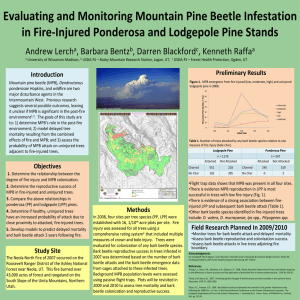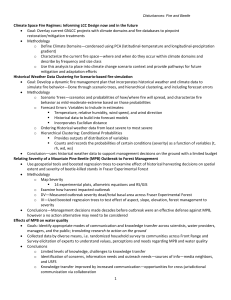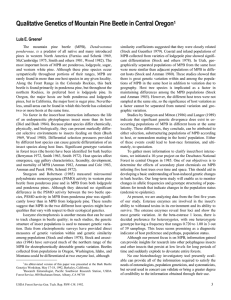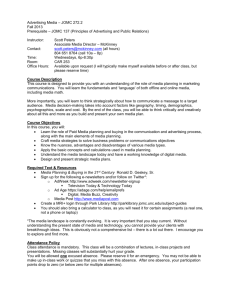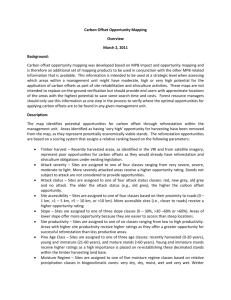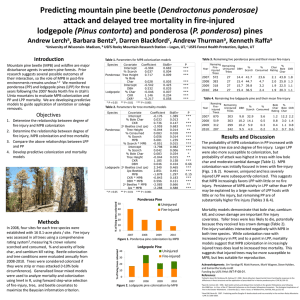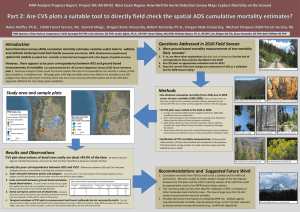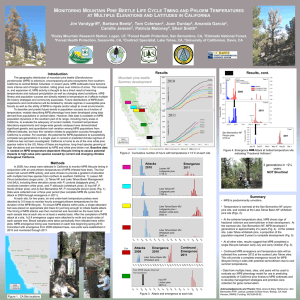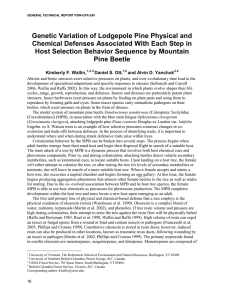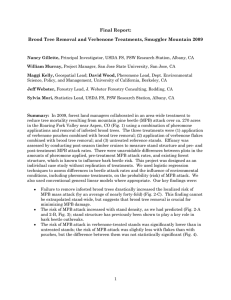Evaluating and Monitoring Mountain Pine Beetle Infestation in
advertisement
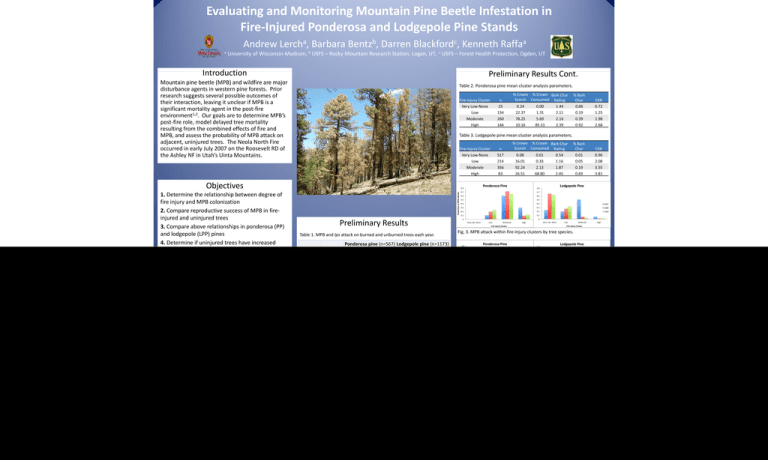
Evaluating and Monitoring Mountain Pine Beetle Infestation in Fire-Injured Ponderosa and Lodgepole Pine Stands Andrew a a Lerch , Barbara b Bentz , Darren c Blackford , Kenneth a Raffa University of Wisconsin-Madison, b USFS – Rocky Mountain Research Station, Logan, UT, c USFS – Forest Health Protection, Ogden, UT Introduction Preliminary Results Cont. Mountain pine beetle (MPB) and wildfire are major disturbance agents in western pine forests. Prior research suggests several possible outcomes of their interaction, leaving it unclear if MPB is a significant mortality agent in the post-fire environment1,2. Our goals are to determine MPB’s post-fire role, model delayed tree mortality resulting from the combined effects of fire and MPB, and assess the probability of MPB attack on adjacent, uninjured trees. The Neola North Fire occurred in early July 2007 on the Roosevelt RD of the Ashley NF in Utah’s Uinta Mountains. Table 2. Ponderosa pine mean cluster analysis parameters. Table 3. Lodgepole pine mean cluster analysis parameters. Objectives 1. Determine the relationship between degree of fire injury and MPB colonization 2. Compare reproductive success of MPB in fireinjured and uninjured trees 3. Compare above relationships in ponderosa (PP) and lodgepole (LPP) pines 4. Determine if uninjured trees have increased probability of attack due to proximity to attacked, fire-injured trees 5. Develop models to predict delayed tree mortality and MPB attack 3 years following fire Preliminary Results Table 1. MPB and Ips attack on burned and unburned trees each year. Fig. 3. MPB attack within fire-injury clusters by tree species. Fig. 4. Tree mortality within fire-injury clusters by tree species. Methods In 2008, four sites for each tree species were established with 16, 0.1 acre plots per site. Fire injury was assessed in all trees using a comprehensive rating system3, measuring % crown scorch (killed from convective heat), % crown consumed (killed by combustion), bark char rating (severity of bole damage from visual inspection), % bark char, and cambium kill rating (CKR: mean incidence of cambium death on four sides). Trees were evaluated in 2008 and 2009 for bark beetle colonization and status (live or dead). Bark beetle reproductive success was determined based on the ratio of emerged beetles to initial attacks using cages attached to infested trees. Background population levels were assessed using passive flight traps. Trees were clustered into similar fire-injury groups using Ward’s Method in PC-ORD. Measurements will be repeated in 2010. Discussion Fig. 1. MPB attack by bark char rating. Fire-Injured PP and LPP are suitable hosts for MPB (Table 1). The pattern and number of MPB attacks differs between tree species over time (Table 1, Figs. 1, 2). Clustering reveals distinct fire-injury groups that demonstrate differing attack and mortality rates (Tables 2, 3, Figs. 3, 4). Endemic populations may build in fire-injured trees and infest uninjured LPP. We cannot yet evaluate this in PP (Figs. 1-3). Predictive Mortality and MPB attack models are in progress. Acknowledgments: Jim Vandygriff, Matt Hansen, Mark Wagner and Steve Hylden. Funding by USFS FHM: INT-F-08-01. References: 1Fettig CJ, Borys RR, McKelvey SR, Dabney CP. 2008. Blacks Mountain Experimental Forest: bark beetle responses to the differences in forest structure and the application of prescribed fire in interior ponderosa pine. CJFR 38, 924-35. 2Ryan Fig. 2. MPB attack by percent crown scorch. KC, Amman GD. 1996. Bark beetle activity and delayed tree mortality in the greater Yellowstone area following the 1988 fires. In: Proc. of the 2nd Biennial Conference on the Greater Yellowstone Ecosystem. The Ecological Implications of Fire in the Greater Yellowstone. J Greenlee (Ed.). Intern. Assoc. of Wildland Fire, Fairfield, WA, pp 151-58. 3Hood SM, Bentz BJ. 2007. Predicting postfire Douglas-fir beetle attacks and tree mortality in the northern Rocky Mountains. CJFR 37, 1058-1069.

